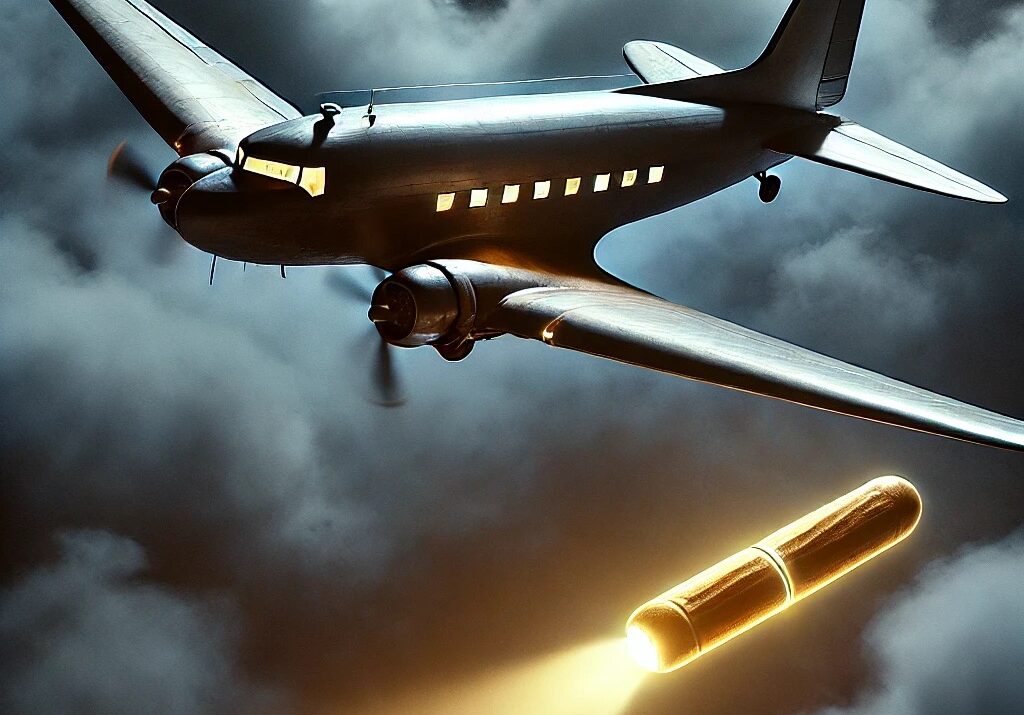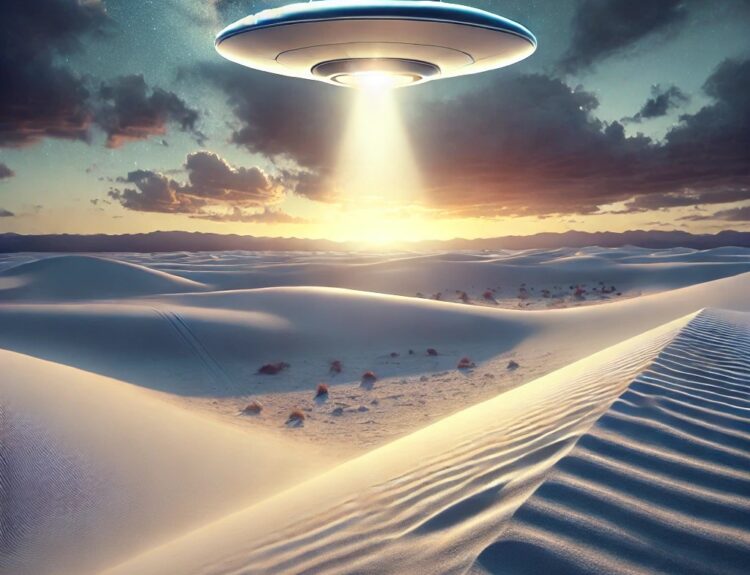The Chiles-Whitted UFO Incident occurred on July 24, 1948, when two commercial airline pilots, Captain Clarence S. Chiles and co-pilot John B. Whitted, reported a close encounter with an unidentified flying object during a flight from Houston to Atlanta. The pilots described seeing a cigar-shaped craft with no visible wings or tail, emitting a bright bluish light and passing within a few hundred feet of their DC-3 aircraft. The object reportedly shot upward into the clouds at a tremendous speed after the encounter. This incident became one of the most famous early UFO sightings, contributing to increased public interest and governmental investigation into the phenomenon.
The Chiles-Whitted incident is a pivotal moment in UFO history, marked by the sighting of an unexplained object by two seasoned commercial pilots. This event, which occurred in the post-World War II era, contributed to the growing interest and concern regarding unidentified flying objects in American airspace. The sighting occurred at a time when America was transitioning from the war to peacetime, and the technological advancements from the war had left the public increasingly aware of and fascinated by aerial phenomena. The encounter is often cited in discussions about the legitimacy of early UFO sightings and continues to intrigue both skeptics and believers alike. The fact that the witnesses were highly credible, with extensive experience in aviation, adds a significant weight to the account, making it a cornerstone case in the history of UFO research.
INCIDENT SUMMARY
On a routine flight from Houston, Texas, to Atlanta, Georgia, Captain Clarence Chiles and co-pilot John Whitted observed a strange, cylindrical object pass by their aircraft at a high speed. The event, which lasted only a few seconds, left both men convinced they had seen something extraordinary, prompting an official investigation by the United States Air Force. The object was reported to be so close that both pilots instinctively ducked, fearing a collision. This incident is one of the most compelling UFO sightings from the late 1940s, a time when the phenomenon was just beginning to capture the public’s imagination. The sighting also coincided with an increasing number of UFO reports from around the world, many of which remain unexplained to this day.
DETAILS
- LOCATION: Over Montgomery, Alabama, USA
- DATE: July 24, 1948
- TIME: Approximately 2:45 AM
- EVENT DURATION: 10 to 15 seconds
- NUMBER OF OBJECTS: 1
- OBJECT(S) SHAPE: Cylindrical with a double row of windows
- DESCRIPTION OF THE OBJECT(S): The object was described as cigar-shaped, approximately 100 feet long, with windows along its side. It emitted a bluish-white glow and left behind a reddish-orange flame, resembling an exhaust, as it flew past. The object appeared to be under some form of intelligent control, as it altered its course slightly to avoid the airliner. This maneuver, combined with its incredible speed, ruled out the possibility of it being a conventional aircraft or meteorite. The pilots also noted that the object did not make any sound as it passed by, adding to the mystery.
- ALIEN(S) ENCOUNTERED: None reported
- DESCRIPTION OF ALIEN(S): Not applicable
- CE CLASSIFICATION: CE1 (Close Encounter of the First Kind)
- Sighting of a UFO within 500 feet without any physical effects or contact.
WITNESSES
- CAPTAIN CLARENCE S. CHILES: Chiles, the pilot, reported seeing the object head-on, describing it as a craft unlike any conventional aircraft he had ever seen in his career. He estimated its speed to be in excess of 500 miles per hour. Chiles had been a pilot since World War II, and his experience made him a credible witness. His description of the craft as having no wings or tail, yet appearing to be solid and mechanical, has been a point of focus in many subsequent analyses of the incident.
- JOHN B. WHITTED: Co-pilot Whitted corroborated Chiles’ account, adding that the object appeared to be man-made due to the distinct rows of windows, but the speed and lack of wings or tail ruled out any known aircraft of the time. Whitted also noted that the object’s luminosity was unusual, not reflecting any known type of lighting used in aviation at that time. Like Chiles, Whitted was a veteran pilot, and his detailed recollection of the event has been crucial in establishing the credibility of the sighting. Both men’s testimonies have been consistent over the years, with neither deviating from their original accounts despite the skepticism they faced.
CONCLUSION
The Chiles-Whitted incident is a fascinating case that remains unexplained despite numerous investigations and theories. The sighting by two credible and experienced pilots adds significant weight to the authenticity of the event. While the U.S. Air Force initially speculated the object could have been a meteor, the detailed description provided by Chiles and Whitted—particularly the presence of windows and the craft’s controlled flight path—challenges this explanation. Some researchers have suggested that the object could have been an experimental military aircraft, though no known craft at the time matched the witnesses’ descriptions. This incident is a key example of early UFO encounters that contributed to the rise of the modern UFO phenomenon and the eventual establishment of official investigations like Project Blue Book. The case also highlights the broader issue of how such encounters are treated by authorities and the media, often being dismissed or downplayed despite credible witnesses and compelling evidence. The Chiles-Whitted encounter remains a cornerstone case in the study of UFOs, continuing to spark debate and curiosity more than 70 years later.








